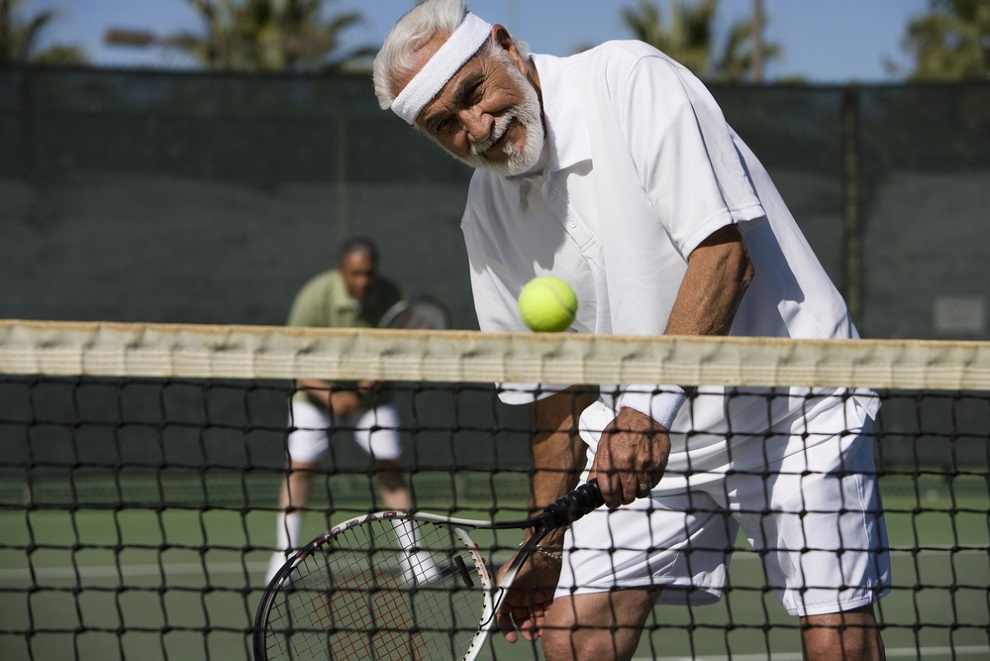You may have heard guys talk about training to failure as the best way to grow muscle, but is there any truth in this? In truth, training to failure is not necessary for muscle growth. While it can increase strength and hypertrophy more quickly in the short run, this method can also lead to overtraining. Read on to learn more about the benefits and risks of training to failure for muscle growth.

What is Training to Failure?
Training to failure, also known as concentric failure, is a phrase used in resistance training to describe pushing your body to its maximum while weightlifting. There are two types of failure: technical and muscular. Technical failure occurs when you reach a point where you cannot perform another rep with good form and tempo. Muscular failure occurs when you cannot move the weight anymore.
Weightlifters use training to failure to grow muscle, increase strength, and to up their testosterone levels. However, studies have mixed results about how effective this training method is at achieving those goals.
What Happens To Your Body When You Train to Failure?
Your muscles fail because they use up their energy supplies. Without energy, your muscles cannot contract. Lactic acid builds up in your muscles, creating that tell-tale burning sensation. That feeling lets you know it is time to take a break. When you finish your intense workout, your liver and kidneys get to work breaking down the lactic acid, and everything goes back to baseline.
Fatigue is when your body needs to rest to get back to baseline. Depending on what muscles you are using, you could experience two different types of fatigue: neural and muscular.
When you lift your heaviest weight or do high-intensity interval training, your central nervous system continually sends signals between the brain and your muscles. Your nervous system can become tired after high-intensity training. It produces fewer signals for your muscles to contract, which means your muscles have less stimulation, and you are in complete failure.
Neural fatigue occurs when you complete isolated, big movements using your greater muscle groups. For example, Olympic lifts and deadlifts are more likely to cause neural fatigue. If you get neural fatigue, it can affect other muscle groups, too, reducing your performance. This can take weeks or months to recover from.
Muscular fatigue, on the other hand, occurs when neurotransmitters are still sending stimulation to the muscles but the intramuscular mechanisms cannot perform. Theories suggest that this occurs when the blood cells are not delivering enough oxygen to the muscles. Lactic acid is then released. Your muscles need calcium to contract, and lactic acid prevents calcium release.
However, with muscular failure, you recover quickly, usually in about a day or two. Either way, this intense training will hurt. Pushing your body to its maximum will leave you feeling sore and tired.
Training to Failure and Muscle Growth
When you perform repetition failure, your body secretes hormones and recruits more muscle fibers, which can result in muscle growth.
Yet, there is still not enough evidence to suggest that training to failure is essential for muscle growth. In fact, it may negatively impact those trying to grow muscle. According to a study published in 2016, training to failure is not necessary for maximal increases in muscular strength and hypertrophy (the growth of muscle cells).
Powerlifters show the greatest gains in muscle strength after high-intensity resistance training performed to muscle failure compared to no failure. However, beginners did not need to train to failure to see strength gains and muscle hypertrophy.
Is Training to Fail a Long Term Solution?
Training to failure may increase muscle strength and muscle mass faster, but it isn't a good method of training for long-term use. People who experience the most gains from this type of practice are bodybuilders. These expert lifters may need to train to failure to break through plateaus.
However, training to failure can also be problematic. If you use this training method exclusively, it can hinder your long-term ability to build muscle. It can increase resting levels of cortisol, the stress hormone. Cortisol hinders anabolic growth factors, affecting your muscle size over time.
It also leads to overtraining if you do it too often. When you train to failure on every set, you are also more likely to use poor form, which can lead to injuries. For example, if you are not careful when training with dumbbells, you could drop them on yourself and get hurt.
This method of strength training can lead to excessive muscle damage. It also takes longer to recover fully, about 24-48 hours. The muscle damage and neuromuscular fatigue also reduce your performance in other workouts.
It is better to balance your workouts. For the best muscle growth results, you should exercise until you are just short of failure during your training sessions.
What is the Best Way to Train to Failure?
Opt for selectively training to failure rather than always pushing yourself to your absolute limits. One way to optimize the train-to-failure method is to leave a few reps in reserve during each set. Then, it ends in failure.
In this case, for example, you can bench press and end the set while you can still perform one or two reps. Then, on your last set, complete the set until you cannot do any more reps. In this method, you can keep performing your other sets instead of affecting your performance on later exercises.
Another way you can train to failure is by decreasing your weight. Start with your normal weight and complete your normal sets. On the last set, decrease your weight and then train to failure. Reducing the weight allows you to get the benefits of training to failure while not affecting your later performance as much.
Occasionally, if you use training to failure for those instances where you don't have time for a full-blown exercise routine, it may save you time. Training to failure does more work in less time, but this rapid-fire training session shouldn't be overdone. Training too quickly and not taking time to practice good form and tempo can affect your overall results. It can also put you at risk of injury.
You can also implement a four-week training block during which the majority of your sets are taken to failure. This can elevate your training to a new level. However, this training block should be followed by several months of reduced use of failure to balance the stimulus and encourage recovery.
What Are Examples of Ways to Reach Failure?
You can complete back-to-back sets of exercises that target the same muscle groups with limited rest to go to failure fast. For example, when you do push-ups, you feel it in your chest and triceps. You'll reach failure faster if you do other exercises that target the same muscles, such as bench presses.
You can also start with a high rep and lighter weight set and then switch to a heavy weight and low rep set to reach failure quickly.
You can also increase the reps while reducing resistance until you cannot complete another rep.
Another technique is pairing an isolation exercise with a compound movement until you fatigue your target muscle before hitting the main set.
If you don't know where to begin or need help creating the best training program, a personal trainer can help. They can advise you on training volume and rep range to meet your bodyweight, strength, and muscle-building goals.
Is Training to Failure Necessary on Every Set?
Training to failure for every set can lead to overtraining. Overtraining in weight training is when you reach a point where your exercise is doing more harm than good for your body. Your performance declines, and you can experience burnout.
You can reach your body's limit if you exercise too much and don't practice a more balanced workout routine that incorporates both high and low-intensity workouts with scheduled breaks. This is when your body isn't getting the nutrients and calories it needs to fuel itself. You may begin to feel more sore or fatigued.
Many bodybuilders supplement their diets with protein supplements as a way to offset this nutritional deficit. Protein powders can benefit some people, but it is always important to consult with your healthcare provider before taking supplements.
The Risks of Overtraining
Working out too hard can affect your whole body. It could lead to injuries, muscle sprains, stress fractures, and joint pain. Your immune system may also become weaker. Overtraining can also cause changes in skin, hair, and nails, digestive issues, and an increase in blood pressure and heart rate.
So, whenever you try out something like training to failure, it is best to do it in moderation rather than use it as your only training method, especially if you are new to lifting. Failure training is best done on isolation exercises such as bicep curls or tricep extensions rather than compound moves such as deadlifts and bench presses. You also do better to quit 1-3 reps before your last rep rather than working out to complete failure.
For example, if 15 reps with the barbell is your maximum, you should aim for quitting at about 10-12 reps. When you stop short of failure, you can still maximize muscle protein synthesis while avoiding the extra fatigue that comes with going to complete failure.

Can You Raise Your Testosterone When You Train to Failure?
Many men believe that training to fail will increase their testosterone levels. A study published in 2016 claims that increased physical activity upped serum testosterone levels in obese men. Another study from 2012 stated that physically active men had more testosterone and healthier semen production than sedentary men.
Both of these studies show that being physically active boosts testosterone production. How does training to failure factor into testosterone production?
One study from 2006 examined the efficacy of 11 wk of resistance training to failure vs. nonfailure. The study suggests that non-failure training boosts your testosterone levels more than training to failure. This means that you do not need to push yourself to your absolute rep max to reap the hormonal benefits of exercise. So, exercising may help your body to produce more testosterone, but training to failure does not make any significant gains in those levels.
Testosterom Replacment Can Help
It is important to note that if you are experiencing symptoms of low testosterone, such as low sex drive, depression, sleep issues, muscle changes, and infertility. Exercise alone may not be the solution. It is always important to seek the advice of a medical professional who will be able to evaluate whether your symptoms are a result of a condition and need specific treatment.
As you age, your testosterone levels naturally decrease, leaving you feeling like you can't perform at the level you once were, but there is a way to get back what you lost.
If you are suffering from low T and are looking for a solution to get your hormones back on track, check out Male Excel. We offer safe and convenient Testosterone Replacement Therapy (TRT) to promote whole-body health. Our fully licensed medical providers offer online testosterone prescriptions and medical support. Our daily injections and topical creams are easily customized for your body.
Daily treatments are the preferred method of TRT that most closely mimics your body's natural hormone production. Simply use our online assessment to check your symptoms, consult with our medical provider, test your levels with an easy test kit shipped to you, and then receive your TRT medication discreetly by mail.
Conclusion
Training to failure has long been touted as a way to build muscle, increase your strength, and increase testosterone. However, training to fail isn't necessary for building muscle. In fact, beginners and casual weightlifters can still build muscle with a regularly balanced workout.
Training to failure can help experienced powerlifters build more muscle and overcome plateaus, but it also comes with risks. Constantly training to failure can lead to overtraining and a higher incidence of injury. If you use this type of resistance exercise, practice caution and balance your training volume. Be sure to incorporate more low-intensity training into your routine to allow your body time to recuperate.





